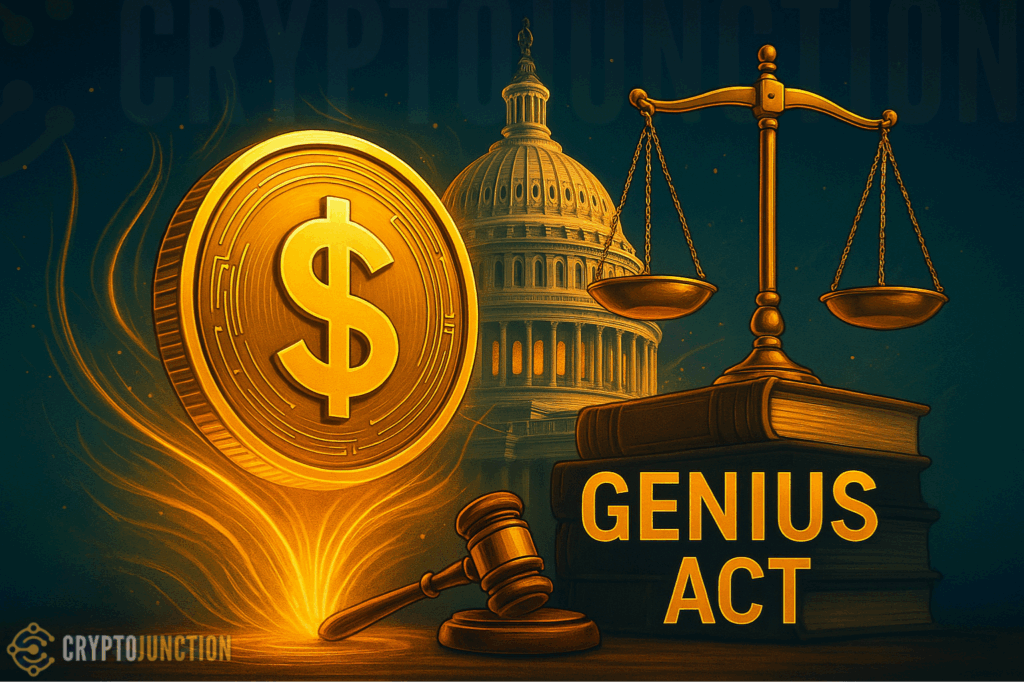The U.S. The House of Representatives approved the Stablecoin Regulation. This is the first major federal framework for stablecoins. On July 17, 2025, the bill passed with a 308 – 122 bipartisan vote. Thus, it moved onto President Trump’s desk for approval. If signed, this act, known as a stablecoin regulation genius move, will set legal guardrails for the $250 billion stablecoin market. It will impact issuers, investors, and financial institutions across the board.
The GENIUS Act outlines strict rules. Only licensed entities such as insured banks, select nonbanks approved by the OCC, and state-regulated issuers (up to $10 billion) may issue stablecoins. All must back coins 1:1 using U.S. dollars, short-term Treasuries, or deposits at insured banks.Regulators plan to ban yield-bearing stablecoins. This has caused push back from DeFi supporters.
Stablecoin Regulation GENIUS Act Reshapes Issuer Landscape
Under passage of the GENIUS Act, transparency is a requirement. Issuers report monthly on their reserve. Public accounting firms audit these reserves. Regulators designed this genius move to avoid failures like TerraUSD.The Act also requires companies go after trust bank licenses, as done by Circle and Ripple. Thus, it tightens the rein on what nonbank stable coins can do.
Experts report that large players will end up with more power. It is noted that about 85% of current stable coin projects will not meet regulatory requirements. With fewer legal players out there, dominant players like USDC may see increased control. At the same time, foreign issuers will have to register with the OCC. They must keep U.S based reserves to access the American market under the new genius act.
The issue also points to greater U.S. monetary integration. With reserve requirements for stablecoin issuers to put in short-term Treasuries, it is reported this may play a role in interest rates. This will be as the market grows to $1.6 trillion by 2030.
Raises DeFi And Political Questions
The law leaves DeFi protocols in a grey zone. While it bans yield-bearing stablecoins, it doesn’t yet clarify how decentralized apps can interact with compliant stablecoins. This opens a regulatory void for developers and investors alike. However, some see opportunity. Future DeFi tools may evolve toward more transparent, off-chain yield models. This might align with the genius regulation act.
Politically, the bill passed after Trump reportedly intervened. He aimed to win over conservative Republicans worried about central bank digital currencies (CBDCs). The role of industry lobby saw crypto PAC’s spend over $130 million in the 2024 election cycle. Over the coming three years, the GENIUS Act breaks into a new phase of U.S. crypto regulation. This is meant to balance innovation with national financial security within the stablecoin regulation genius act framework.

